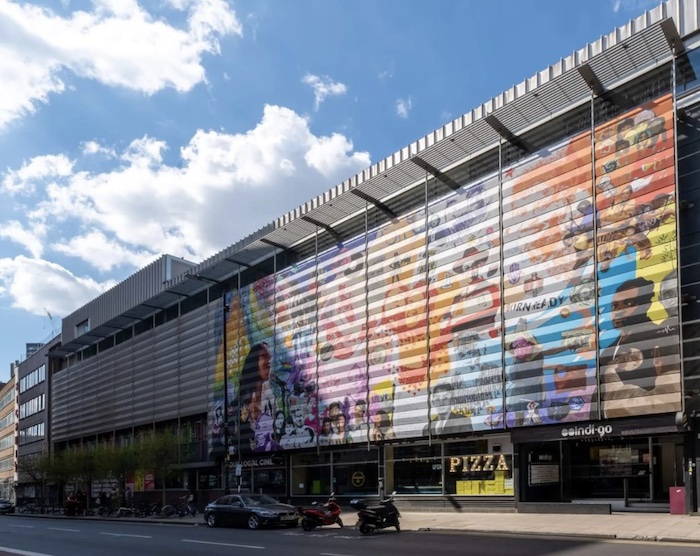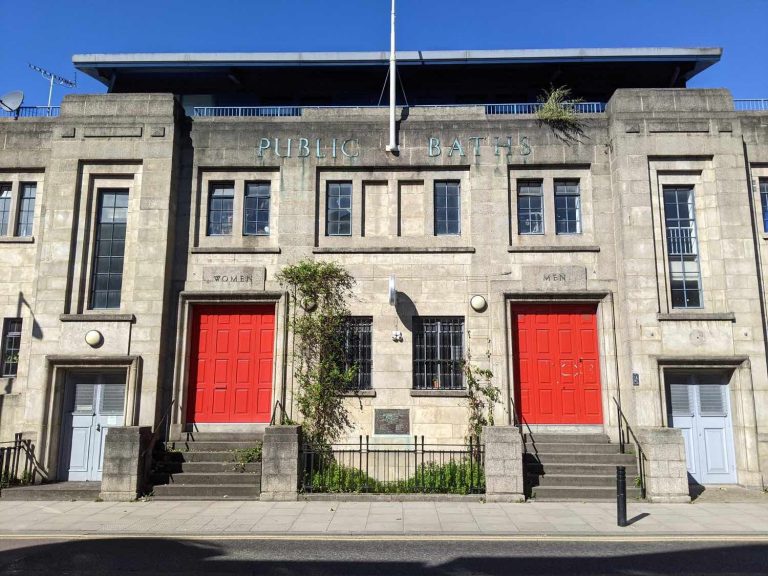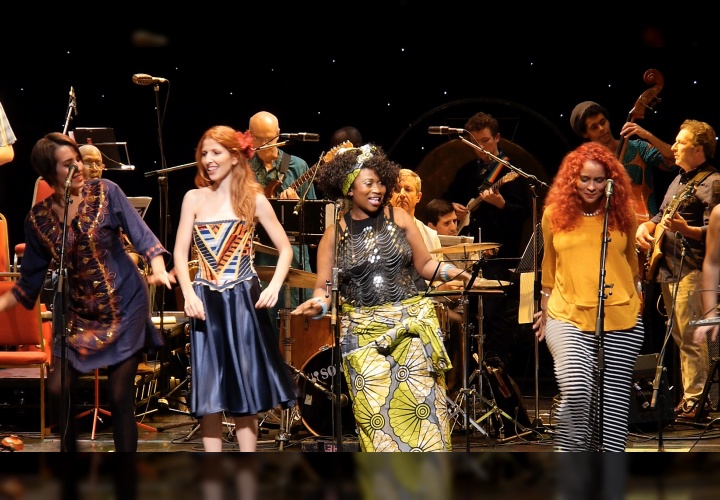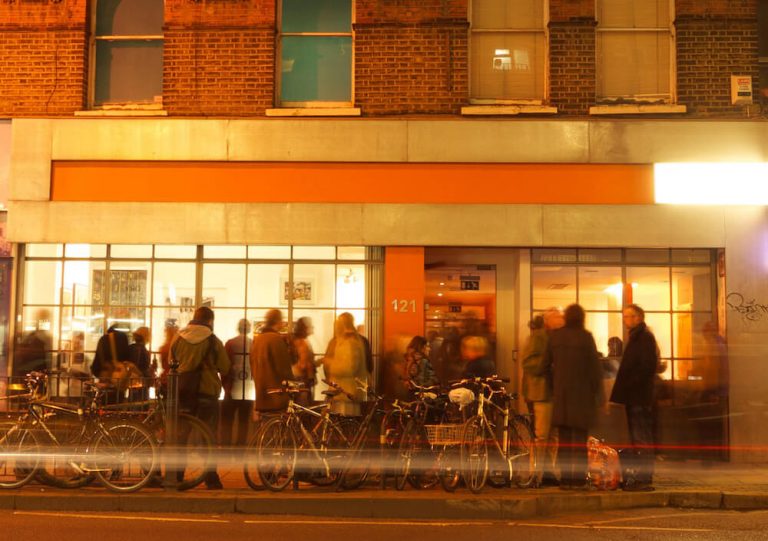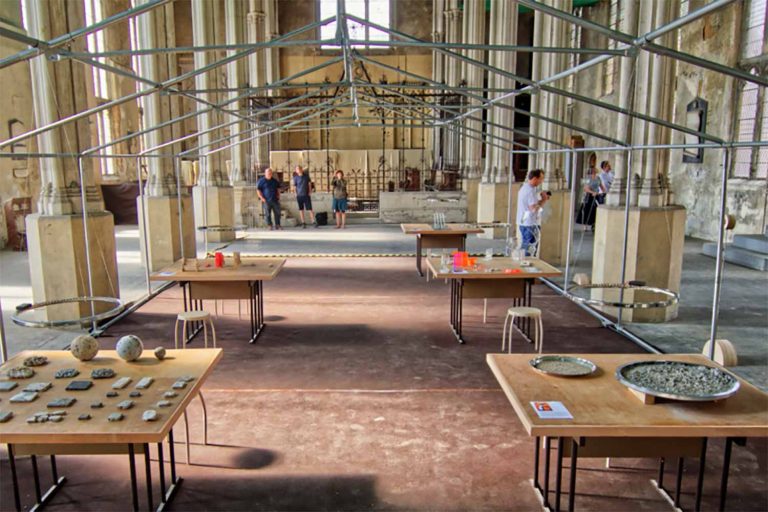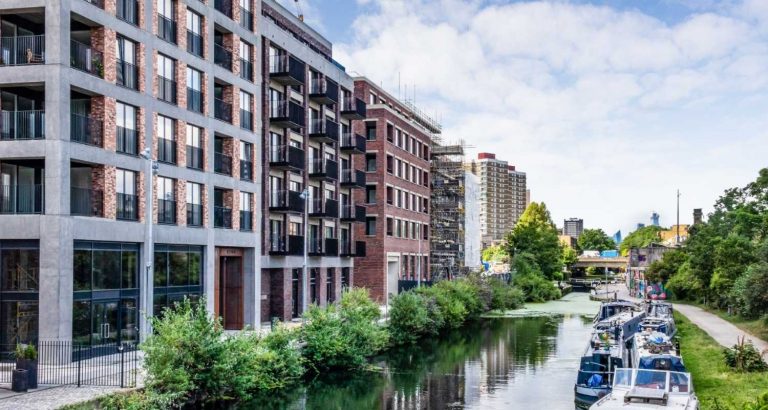A guide to Tower Hamlets Cemetery Park: its history, graves and notable sights
One of East London’s most unexpected jewels and best-kept secrets, we explore the history of the tranquil woodland of Tower Hamlets Cemetery Park.
Once the graveyard of one of London’s most deprived areas, Tower Hamlets Cemetery Park (once called Bow Cemetery) is now one of the biggest stretches of semi-wild woodland in London, and one of the best parks the East End has to offer.
One of the most commonly said things about Tower Hamlets Cemetery Park is ‘How come I’ve never been there?’ – this really is a hidden gem.
Ever popular with dog walkers and nature lovers who enjoy the seasons all year round, Tower Hamlets Cemetery Park was also home to Danny Boyle’s Shuffle festival.
The Cemetery is also a wonderland for the very young. Here, children can attend workshops about the woodland, or just encounter its many different wildlife.
The park is served by both Mile End and Bow Road tube stations and is best approached from Southern Grove, a road that runs between the two.
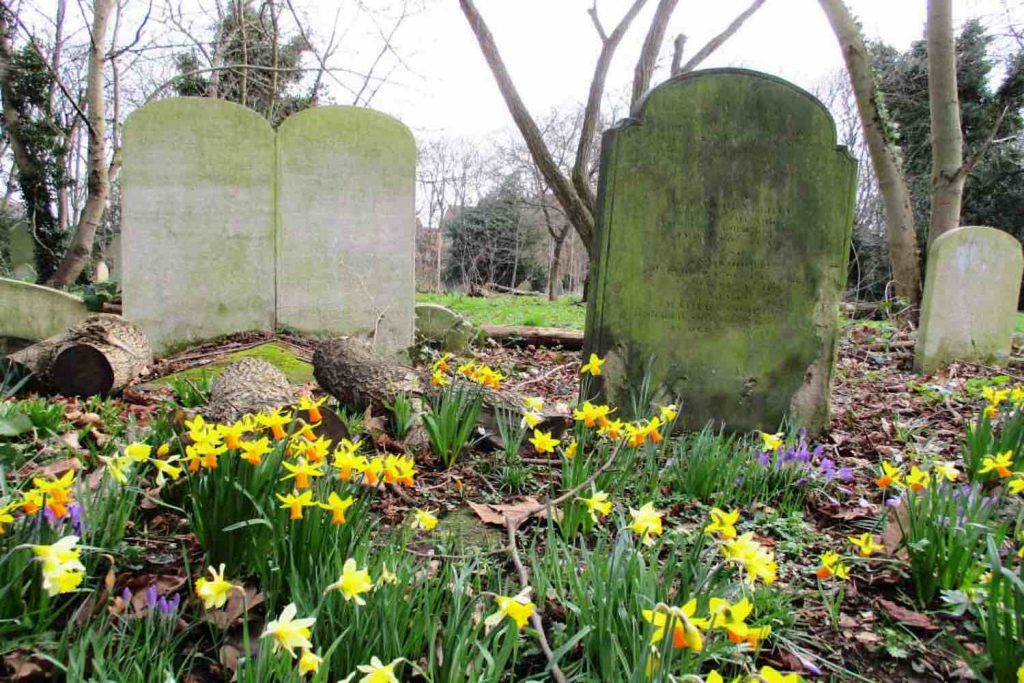
History
Before the Victorian Era, London’s dead were buried in small churchyards around the city, but these became overcrowded and overrun with disease.
An Act of Parliament was passed which allowed companies to purchase land and set up cemeteries outside the boundaries of the City of London. Seven cemeteries, later know as the ‘Magnificent Seven’, were created including Tower Hamlets Cemetery as well as Highgate Cemetery, where Karl Marx was interred.
In 1841, the Cemetery was named The City of London and Tower Hamlets Cemetery, after the company that opened it. The City of London and Tower Hamlets Cemetery Company was made up of eleven wealthy directors, including the Lord Mayor of the City of London. The company bought 27 acres of land and the cemetery was divided into consecrated and unconsecrated areas for Anglican and non-Anglican burials.
Tower Hamlets Cemetery was consecrated by the Bishop of London on Saturday 4 September 1841 before being opened for bodies. The cemetery was consecrated in the morning, the first burial took place in the afternoon. The first burial was Walter Gray of Alfred Street in Bow.
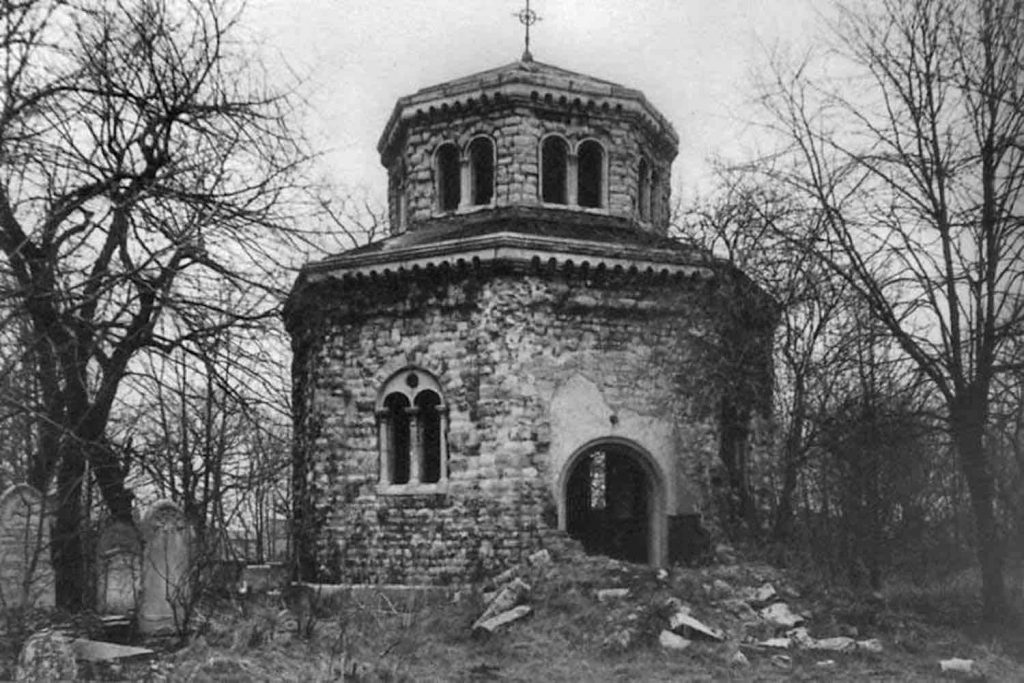
Tower Hamlets Cemetery was the most working class of London’s Victorian Cemeteries. In the first two years after it opened, 60% of burials were in public graves – burials for people who could not afford their own plot and had to be buried in shared graves. It was also the most used cemetery in the East End, and by 1889, less than fifty years later, over a quarter of a million bodies had been buried (270,000 to be precise).
Over time, the cemetery became increasingly overcrowded and increasingly neglected. During World War Two, the cemetery was bombed five times, and significant damage was done to both the chapels, which were later demolished. Shrapnel damage can still be seen on the graves in the north-west corner of the park.
In 1966, the Greater London Council bought the Cemetery from The City of London and Tower Hamlets Cemetery Company and closed it for burials. The GLC wanted to create an open space for the public – they destroyed the damaged chapels and cleared half an acre of graves. A lack of funding stopped this project in its tracks.
Ownership was given to the London Borough of Tower Hamlets in 1986. In 2000, seven of the graves were English Heritage listed as Grade II for outstanding design and the next year, the park became Tower Hamlet’s first local nature reserve.
Graves of famous people buried at Tower Hamlets Cemetery Park
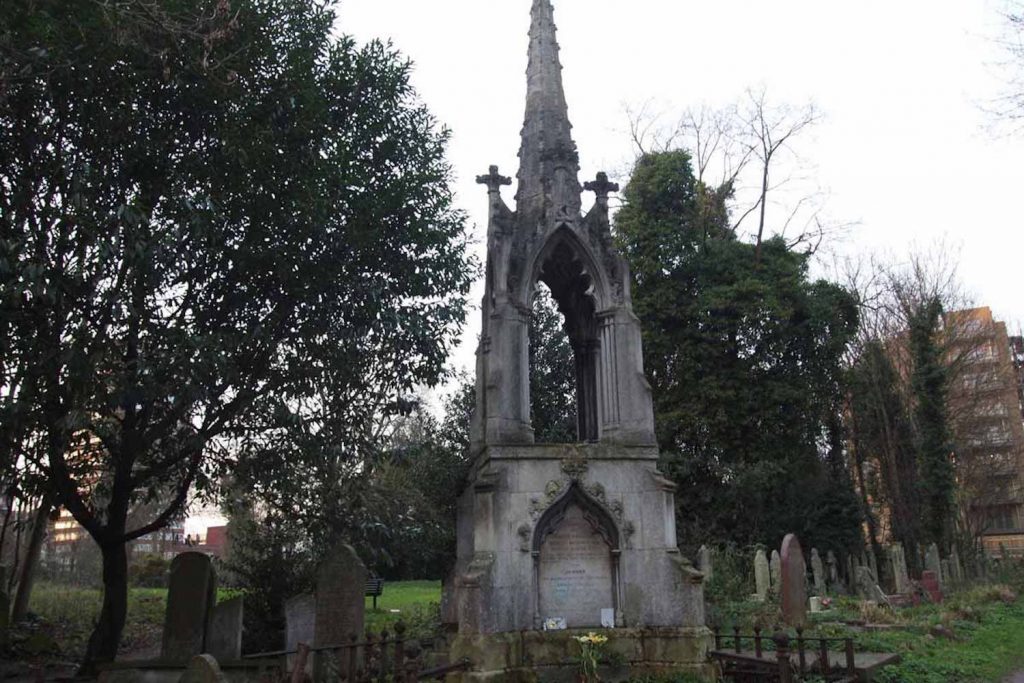
As part of the Magnificent Seven, Tower Hamlets Cemetery Park has a variety of interesting people buried within its walls. Not as star-studded as Highgate, Tower Hamlets offers a walk-through of the people of Victorian Britain. Pick up a leaflet from The Friends of Tower Hamlets Cemetery Park for a guided tour of the best graves to see, including…
- Charlie Brown – publican of the Railway Tavern.
- Major John Buckley VC – soldier and one of the first recipients of the Victoria Cross, for his bravery in the Indian Rebellion of 1857.
- Will Crooks – Trade unionist, leader in the London dock strike of 1889 and first Labour Mayor of Poplar.
- Clara Grant OBE, nicknamed ‘The Bundle Woman of Bow’, educator and social reformer, a local primary school is named after her. She was also the founder of the Fern Street settlement.
- Alexander Hurley – Singer and comedian, second husband of Marie Lloyd.
- Charles Jamrach – Animal supplier to P. T. Barnum and others..
- Alfred Linnel – Trampled by a police horse during a demonstration in Trafalgar Square. His funeral was organised by Annie Besant and William Morris.
- Dr Rees Ralph Llewellyn – Performed autopsy on Mary Ann Nichols, generally considered the first victim of Jack the Ripper, in the family grave.
- Robert McLachlan – early entomologist.
- Henry Norris – Civil Engineer, involved with lighthouse (re)construction projects.
- John Northey, who died in the Princess Alice disaster in 1878.
- Hannah Maria Purcell – Widow of William Purcell, carpenter of HMS Bounty.
- John ‘White Hat’ Willis – son of John ‘Jock’ Willis (known as Old Stormy Willis), founder of Jock Willis Shipping Line (a ship owning firm that owned, among others, the Cutty Sark).
- Some victims of the Bethnal Green Disaster.
- Monument to children who were in the care of the charity of Thomas Barnardo and were buried elsewhere in the cemetery in unmarked graves.
- The Blitz Memorial, a memorial to those who died in The Blitz, the memorial is made out of bricks from properties damaged in the Blitz.
- The Westwood Monument. Joseph Westwood (both father and son) were involved in the iron industry, namely the building of ships and other constructions made of iron.
- The War Memorial, located near the entrance on Southern Grove.
Shuffle Festival
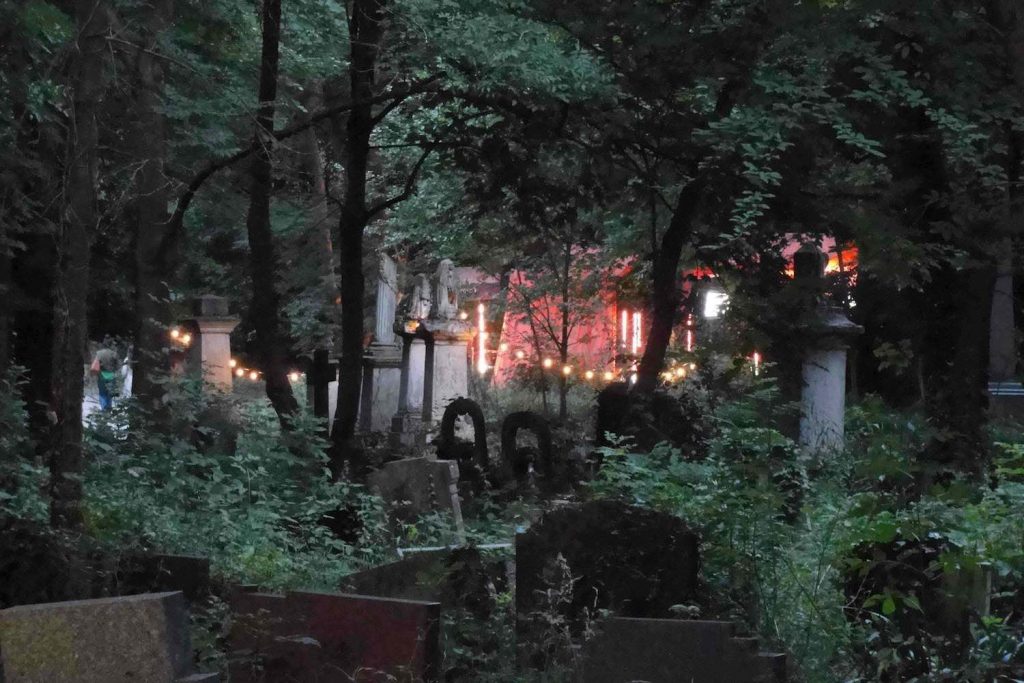
Shuffle Festival was an annual event in Mile End that started in 2013. The festival exhibits creativity through film, science, performance, architectural installations, walks, food, and music, taking place in Tower Hamlets Cemetery Park until its last event in 2020.
In 2013, Shuffle Festival opened the gates of St Clement’s Hospital to the public for the first time since 1849, when the institution was built as a workhouse, and later became a psychiatric hospital in 2007. Shuffle was a month-long exploration of the wealth of artistic talent in the area, curated by Danny Boyle and presented by the East London Community Land Trust (ELCLT).
Every year focused on a different theme, for example, the relationship between public and private. Shuffle Festival 2017 inhabited a series of more intimate spaces for films, performances and music. It played around with people’s right to public space, as people inhabiting a city, and as a generation that owns less than the previous. Shuffle expanded outside of the walls of Tower Hamlets Cemetery Park, to explore public and private spaces in and around Mile End.
Soanes Centre
Based in Tower Hamlets Cemetery Park, The Soanes Centre is the location for the outreach activities of the Setpoint London East, as well as the Friends of Tower Hamlets Cemetery Park. Setpoint is an educational charity that aims to inspire children about Science, Technology, Engineering and Maths, and uses the Park as an outdoor classroom.
Let’s Get Lost app
If you want to have a more immersive experience at the Park, you should seriously consider the Let’s Get Lost app.
Available for download on Itunes, Let’s Get Lost is a sonic map of Tower Hamlets Cemetery Park. The app triggers different stories using the GPS on your phone, so the audio changes as you wander around. Commissioned by the Arts Council through Shuffle festival, this app truly adds a new dimension to the park.
The recordings are a mixture of interviews, field recordings and archival recordings from the British Library and have been made to reveal the hidden secrets of Tower Hamlets Cemetery Park.
To download the app, click here.
Barnardo’s Children Memorial
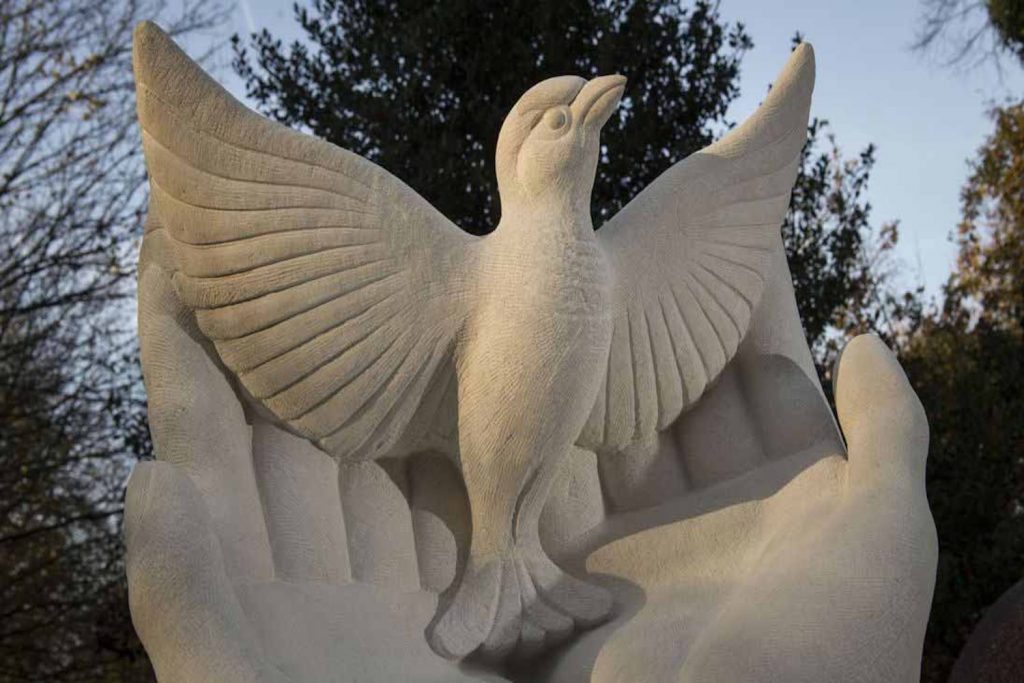
In 2016, a statue was unveiled in Tower Hamlets Cemetery Park to remember more than 500 Barnardo’s children that are buried in unmarked graves. Thomas Barnardo, who founded his charity in 1867, gave all of the children proper burials, but could not afford headstones.
Jean Clark, who was helped by Barnado as a child, raised £10,000 to pay for the sculpture. Tom Nicholls, who helped decorate the Queen’s Jubilee barge, created the sculpture out of Portland Stone.
It stands in the Cemetery Park, to ensure those children are never forgotten.
Friends of Tower Hamlets Cemetery Park
If you want to support this extraordinary East End attraction, head to The Friends of Tower Hamlets Cemetery Park website to find out how you can get involved.
The Friends of Tower Hamlets Cemetery Park was set up to protect, conserve and care for the Cemetery Park and surrounding land on behalf of the council. A not-for-profit venture, the FOTHCP aims to explore history, improve mental well-being and maintain and manage the woodland, meadows and heritage, for the enjoyment of the community.
They say ‘This woodland cemetery is a unique place of transformation: a people’s cemetery, a place for remembrance, a sanctuary for humans as well as nature, a place for festivals, field studies and forest schools. Always changing with the seasons it is rooted in the history of the East End, a place of rich heritage that is full of possibilities and freedom for all.’
The FOTHCP run a wide range of public events and short courses, including Forest School for children during school holidays. People can also volunteer to work, either as individuals or as corporations for the FOTHCP.
Part of the FOTHCP’s role is to manage and care for the wildlife in the park. Each year, they develop and change the areas within the park, and there are now five wildlife ponds. The FOTHCP have organised huge amounts of biological recording, both professional and amateur. Butterflies and birds are comprehensively recorded, while there is some recording of moths, spiders, beetles and flies.
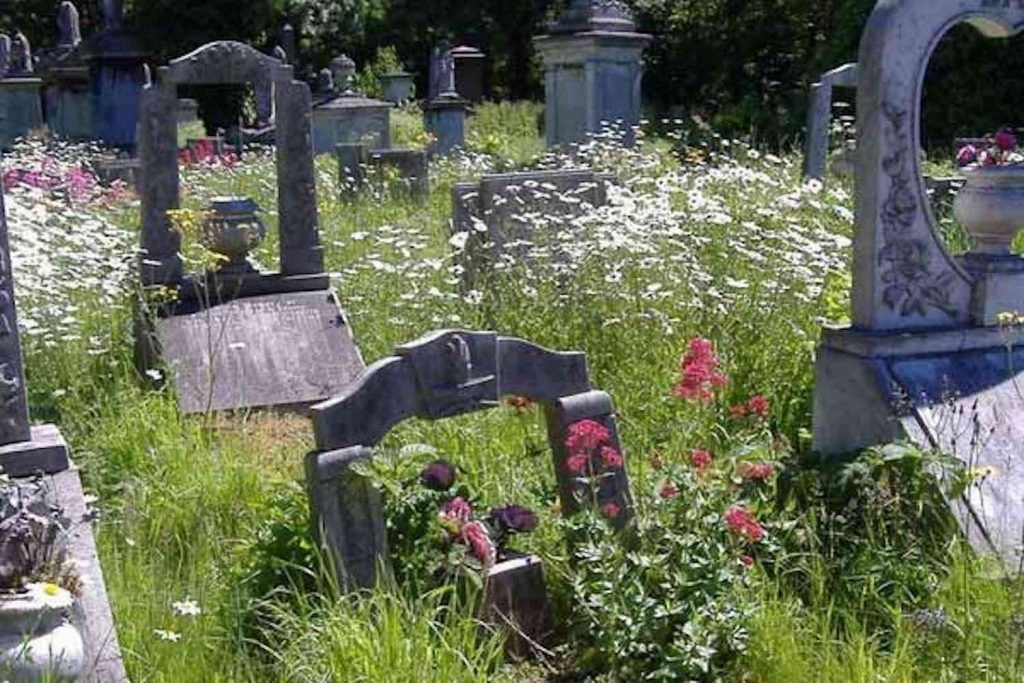
Want to learn more from the East End’s treasure trove of history? You might also enjoy our piece on the story of Mile End Park.


